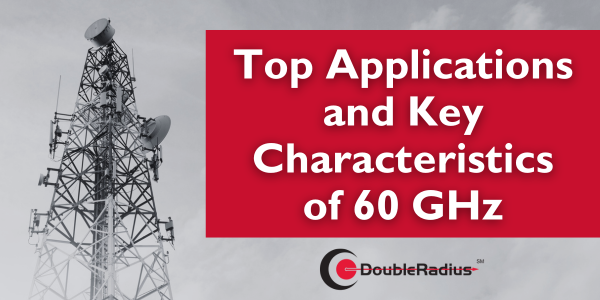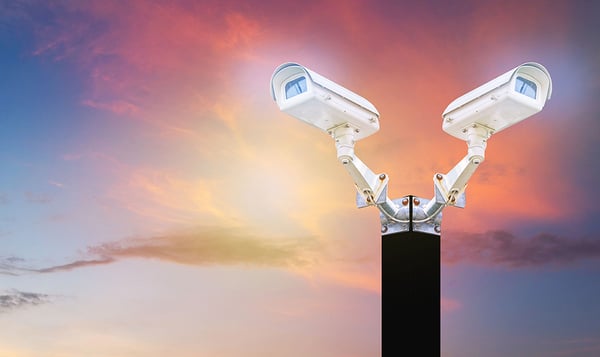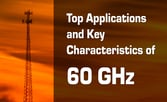Spectrum is the name of the game in fixed wireless. Reliable, interference-free spectrum in a non-licensed band is increasingly harder to find. This is precisely why 60 GHz products are making a surge.
The 60 GHz frequency band is an unlicensed millimeter-wave range that can deliver impressive speeds and high throughput, particularly in Line of Sight (LOS) scenarios. This article explores both the key characteristics to understand when deploying 60 GHz, and what have become popular applications.

Key Characteristics of 60 GHz
Before diving into top applications, let’s first consider their strengths and the weaknesses that are important to keep in mind:
- Unlicensed and Interference Free
This spectrum spans 57 GHz - 64 GHz and is widely available, especially when compared to the 2.4 and 5 GHz bands. You can divide this 7 GHz of spectrum into channels ranging from 1 to 2 GHz wide. - Massive Throughput
Some products currently available on the market can achieve throughput ranging from 1 to 7 Gbps within this frequency band. - Line of Sight
Because 60 GHz uses a highly focused, small beam width, Line of Sight between links is crucial. Near Line of Sight (LOS) or Non-Line of Sight (NLOS) conditions are not suitable for 60 GHz connections. - Shorter Range
The maximum distance that 60 GHz links can cover is approximately 2-3 kilometers (or 1.5-1.8 miles) because the 60 GHz signal is absorbed by oxygen in the atmosphere. - Rain Fade
Anticipate rain signal degradation for 60 GHz connections, especially when they are pushing the limits of their range. - Failover Radios
To ensure consistent connectivity despite rain fade and other factors, many 60 GHz products now include failover radios operating in the 5 GHz band. This maximizes the strengths of 60 GHz while also compensating for inherent limitations.
Top Applications for 60 GHz
Service Providers, System Integrators, security companies, and others are having success in 60 GHz with solutions currently on the market. Top applications include:
- Gigabit Backhaul
The impressive combination of high aggregate speeds and minimal latency in 60 GHz products makes them a great choice for network backhaul, especially over shorter distances. - Faster Point to Multipoint Systems
The need for higher data throughput has prompted service providers to go beyond just using 60 GHz for Point-to-Point connections; they are also harnessing its potential to deliver faster speeds to multiple client locations when needed. - Video Surveillance
In security applications where wired camera connections may not be feasible, organizations are using 60 GHz technology to actively connect remote video cameras. Links are installed to support 4k video, reliably delivering the required throughput for a large number of cameras in a system.

Get Started with 60 GHz Technology
DoubleRadius partners with top-tier 60 GHz radio manufacturers, offering a comprehensive range of solutions tailored to your network's unique requirements. Our dedicated team of experts is available to assist you in getting the ideal 60 GHz setup for your specific needs. Gain the confidence of having a trusted partner by your side. Get in touch with DoubleRadius today to decide on the most suitable 60 GHz solution for your network infrastructure!

